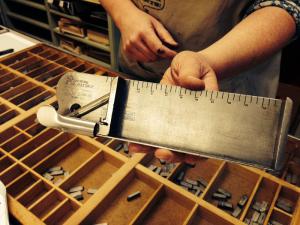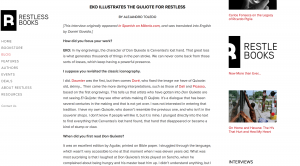Working in the letterpress studio this week has been a very enjoyable experience. I worked in this studio last year for my 19th Century American Literature class, and I was happy to learn I’d be coming back this semester.
I think what has boggled my mind, both times I’ve worked in the studio, is the amount of meticulous work that is required to ensure a successful process. Type setting the sorts takes focus and time. Transferring the type to the press takes precision and time. Inking the press, prepping it with paper, making a few test prints, all take patience and time.
Time. The whole process takes time! When working, I asked Professor Rippeon how one would go about printing something like the Bible… Do you set all the pages of type, have them ready to go, and crank them out in one sitting? Nope. Instead, due to limited amounts of type, if one were printing something so large, they would have to set and press one page at a time, put all the type back, and start the process over and over again.
So, what I’ve gathered from this whole experience? I would’ve never had the patience!



